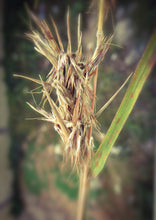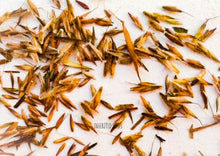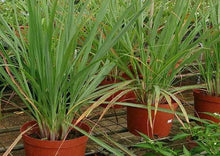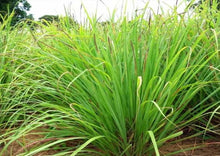
NOTE: LEMONGRASS PLANTS DO SEED!!
Lemongrass West Indian (Cymbopogon flexuosus) is a unique and highly sought after variety of lemongrass that is prized for its delicate and flavorful leaves. This heirloom variety has been passed down through generations of gardeners and farmers, and is known for its superior taste and quality.
The origin of Lemongrass West Indian can be traced back to the West Indian islands, where it has been used for centuries in traditional cooking, as well as in herbal medicine. The leaves of the plant are known for their citrusy and lemony scent and flavor, making them a popular ingredient in many dishes.
Lemongrass West Indian is a tall and robust grass, reaching up to 4 feet in height. The leaves are long and slender, with a bright green color and a slightly woody texture. They have a strong lemony and herbaceous flavor, with a subtle sweetness, making them a perfect addition to any dish.
This variety of lemongrass is commonly used in many traditional West Indian dishes, such as curries, stews, and soups. It is also used to infuse teas, marinades, and dressings, and can be used as a garnish or in a bouquet garni to add flavor to soups and stews.
Lemongrass West Indian is also known for its medicinal properties, and is commonly used to relieve stress and anxiety, and to help with digestion. It also has anti-inflammatory and anti-bacterial properties, making it a popular ingredient in natural skincare and beauty products.
Lemongrass West Indian is easy to grow, and can be planted in a variety of soil types and climates. It prefers full sun and well-drained soil. It is also a great option for those who are looking for an heirloom variety that is non-GMO and chemical-free.
Overall, Lemongrass West Indian is a versatile and flavorful addition to any garden or kitchen. With its rich history, superior taste, and medicinal properties, it is a must-have for any gardener or chef who is looking to add a unique and high-quality ingredient to their dishes.
Two varieties are commonly found in nurseries: East Indian lemon grass (Cymbopogon citratus) and West Indian lemon grass (Cymbopogon flexuosus). Both can be used for cooking, but the thicker West Indian variety is better.
Cymbopogon flexuosus, or commonly referred to as Lemon Grass, is a tropical perennial that is a well-known herb for Asian foods and for other culinary uses.
Lemon grass plants forms a clump, reaching 36 – 60 inches in height and 24 – 36 inches in width. It is very much like an ornamental grass with strap-like leaves reaching 36 inches and arching.
This grass plant has a strong lemon aroma, and is used in making oil. It is used in fish and chicken dishes, soups and sauces, and in hot teas. It also is a natural mosquito repellent.
These Non-GMO plants prefer full sun to partial shade and well-drained soil. Space plants 36 - 48 inches apart. Lemon Grass will grow as an annual in cold areas. It also will do well planted in a container so that it can be brought indoors during the winter.
Sowing rate: Sow 2 - 3 heirloom seeds per plant and start repelling mosquitoes or use for culinary purposes.









